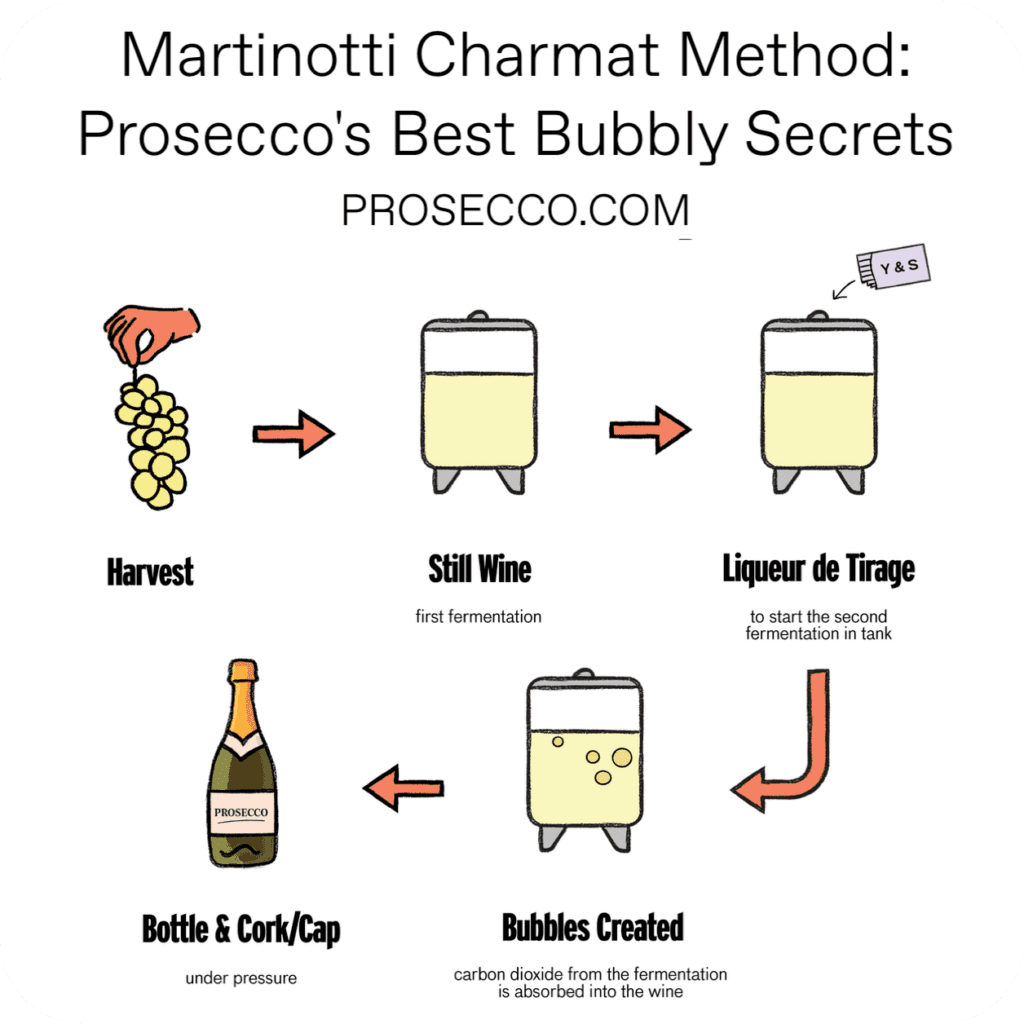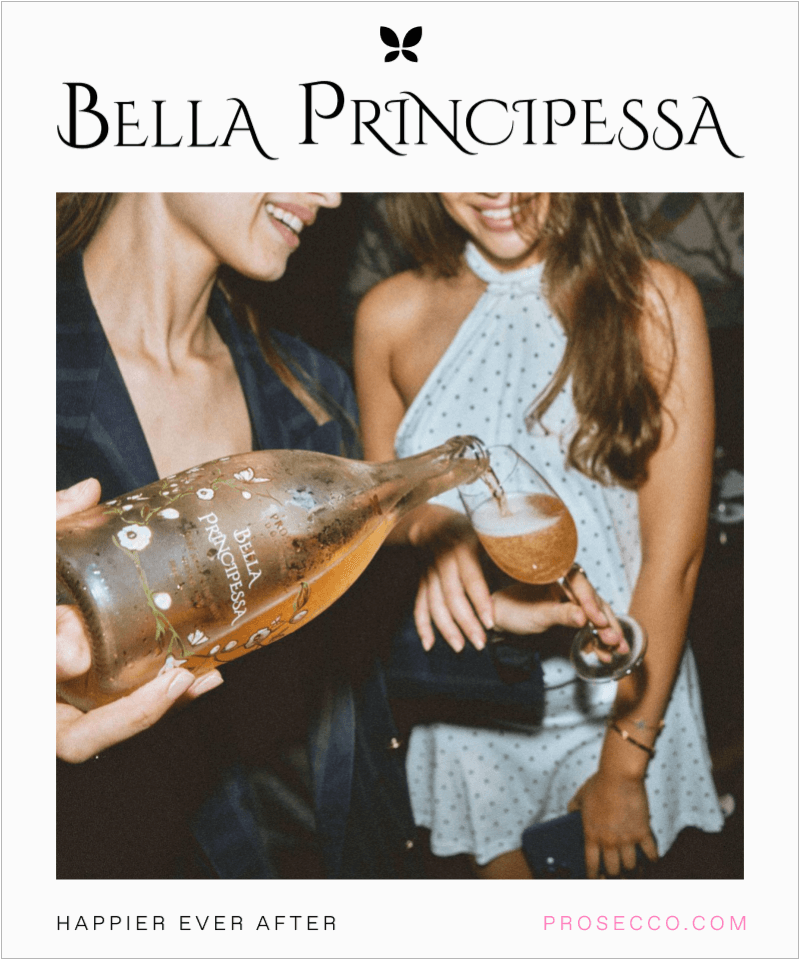Raise your glass to the Martinotti Charmat method! This ingenious technique for producing sparkling wine has stood the test of time, delivering the bubbly goodness we all know and love.
In this comprehensive guide, we’ll explore the ins and outs of this fascinating method, delving into its history, how it’s applied, and even answering some frequently asked questions. So let’s pop the cork and dive into the effervescent world of the Martinotti Charmat method!
The Origins of the Martinotti Charmat Method
A Tale of Two Innovators
The Martinotti Charmat method is named after two pioneers in the wine industry: Federico Martinotti, an Italian enologist, and Eugène Charmat, a French winemaker. While both contributed to this process’s development, Martinotti discovered it in the late 19th century. However, Charmat was instrumental in refining and popularizing the method, earning him a spot in the name.
The Birth of a Bubbly Revolution
The Martinotti Charmat method was a game-changer in sparkling wine, offering an alternative to the more labor-intensive traditional method. This new approach allowed for more efficient, cost-effective production, making bubbly beverages more accessible.
Understanding the Martinotti/Charmat Method
Step by Step: How It Works
Primary Fermentation: The process begins with primary fermentation, where grape juice is converted into a base wine through the action of yeast. This stage is similar to the production of still wines.
Adding the “Liqueur de Tirage”: To kick off the secondary fermentation, a mixture of sugar and yeast, known as the “liqueur de tirage,” is added to the base wine.
Sealed Tank Fermentation: Unlike the traditional method, which uses individual bottles, the Martinotti/Charmat method employs large, sealed tanks for secondary fermentation. This is where the magic happens – the CO2 produced during fermentation is trapped, creating those delightful bubbles.
Filtration and Dosage: Once the fermentation is complete, the wine is filtered to remove the yeast and sediment. A “liqueur d’expédition,” containing sugar and sometimes other flavorings, is added to balance the acidity and achieve the desired taste profile.
Bottling and Corking: Finally, the sparkling wine is bottled and corked, ready to be shipped off for our enjoyment.

The Pros and Cons of the Martinotti/Charmat Method
Pros
- Cost-effective
- Faster production time
- Consistent quality
Cons
- Lower complexity compared to the traditional method
- Limited aging potential
Martinotti Charmat Method in Practice
Notable Varieties of Sparkling Wine
The Martinotti Charmat method is responsible for some of our favorite sparkling wines, including:
- Prosecco is the world’s most famous Italian sparkling wine made primarily from Glera grapes from the Veneto and Friuli Venezia Giulia regions. Renowned for its light, refreshing taste and notes of green apple, pear, and citrus, it’s a versatile choice for casual sipping and pairing with various dishes.
- Lambrusco is a refreshing, effervescent Italian red wine from the Emilia-Romagna and Lombardy regions. Known for its fruity, slightly sweet flavors and vibrant acidity, it’s a delightful choice for casual sipping or pairing with various dishes.
- Asti Spumante is a sweet, sparkling Italian white wine made from Moscato Bianco grapes, primarily produced in the Piedmont region. With its fragrant aromas of peach, apricot, and honeysuckle, it’s an ideal accompaniment to desserts or enjoyed as a celebratory drink.
The Charm of Charmat: Pairing Suggestions
Our latest article on pairing suggestions is “Prosecco Food Recipes: Delicious Ideas for Every Occasion,” but at a glance, wines produced using the Martinotti Charmat method offer a delightful, fruity, and easy-drinking experience, making them an ideal choice for various occasions and food pairings. Here are some recommendations:
- Light appetizers
- Seafood dishes
- Asian cuisine
- Desserts
Frequently Asked Questions
1. What’s the main difference between the Martinotti/Charmat and traditional methods?
The primary distinction lies in the secondary fermentation process. The traditional method, also known as the “Méthode Champenoise,” involves fermenting the wine in individual bottles, while the Martinotti/Charmat method uses large, sealed tanks. This results in a more cost-effective and efficient production process for the latter.
2. Do wines produce using the Martinotti Charmat method age well?
Typically, wines made through this method have limited aging potential compared to those created using the traditional method. The Martinotti/Charmat method yields wines with simpler flavor profiles, best enjoyed within a few years of production.
3. Can I still find complexity in Martinotti Charmat method wines?
Absolutely! While they may not exhibit the same level of complexity as traditional method wines, sparkling wines produced via the Martinotti Charmat method can still offer a delightful array of flavors and aromas. Factors such as grape variety, terroir, and winemaking techniques can all contribute to the wine’s overall character.
4. Are all Proseccos made using the Martinotti/Charmat method?
The vast majority of Proseccos are produced using the Martinotti/Charmat method. However, a select few wineries employ the traditional “Col Fondo” method, resulting in Prosecco’s unique, unfiltered style.
5. What is Col Fondo Prosecco?
Col Fondo is a traditional, unfiltered style of Prosecco made using the ancestral method, where secondary fermentation occurs in the bottle, leaving natural sediment at the bottom. Characterized by its cloudy appearance, complex flavors, and gentle effervescence, Col Fondo offers a unique and authentic sparkling wine experience.
6. How does the Martinotti/Charmat method impact the environment?
The Martinotti/Charmat method’s use of large, sealed tanks for secondary fermentation reduces the need for individual glass bottles, which can lower the overall carbon footprint of the production process. Additionally, the shorter fermentation time may translate to less energy consumption.
7. Is there a significant price difference between wines made using the Martinotti/Charmat method and those using the traditional method?
In general, wines produced via the Martinotti Charmat method tend to be more affordable due to the lower production costs and shorter maturation time. However, there are exceptions, and the final price can vary based on brand, region, and vintage factors.
Experience the Elegance of Bella Principessa’s Premium Prosecco Superiore DOCG from Asolo
Immerse yourself in the world of exquisite sparkling wine by trying Bella Principessa’s Premium Prosecco Superiore DOCG from the picturesque Asolo region. This exceptional brand stands out for its incredible taste, exceptional presentation, and commitment to quality. Let’s dive into the unique characteristics that make Bella Principessa’s Prosecco truly remarkable.
Unrivaled Taste Profile
Bella Principessa’s Prosecco Superiore DOCG is crafted with the utmost care, resulting in a captivating taste experience that will leave you longing for more. The meticulously selected Glera grapes from the lush Asolo hills contribute to the wine’s aromatic complexity and delicate flavors. Expect a symphony of fruity and floral notes, with hints of green apple, pear, and wisteria, complemented by refreshing, crisp acidity.
Luxurious Presentation
The elegance of Bella Principessa’s Prosecco is evident not only in its taste but also in its presentation. The brand’s distinctive packaging, elegant label design, and iconic Prosecco Superiore DOCG seal show its commitment to excellence. This attention to detail ensures that every bottle of Bella Principessa Prosecco exudes sophistication and luxury, making it the perfect choice for celebrations and special occasions.
Quality You Can Trust
Bella Principessa’s dedication to quality goes beyond taste and presentation. As a Prosecco Superiore DOCG, this wine adheres to the strictest production standards and regulations, ensuring a consistently top-tier product. The Asolo region’s unique terroir and microclimate, coupled with the brand’s unwavering commitment to sustainable and eco-friendly practices, contribute to the exceptional quality of this premium Prosecco.
Elevate Your Sparkling Wine Experience
If you want to indulge in a truly exceptional Prosecco that embodies the best of the Martinotti/Charmat method, look no further than Bella Principessa’s Premium Prosecco Superiore DOCG from Asolo. Its unrivaled taste, luxurious presentation, and dedication to quality make it the perfect choice for those seeking an unforgettable sparkling wine experience. Cheers to Bella Principessa!
How is Prosecco Doc Rose Made?
Prosecco DOC Rosé is made by blending Glera grapes, traditionally used for Prosecco, with a small percentage of red Pinot Nero (Pinot Noir) grapes. The winemaking process involves the following steps:
- Primary fermentation: The Glera and Pinot Nero grapes undergo separate primary fermentations, resulting in white and red base wine.
- Blending: The white base wine (Glera) is carefully blended with the red base wine (Pinot Nero) to create the desired rosé color and flavor profile.
- Secondary fermentation: The blended wine undergoes secondary fermentation using the Martinotti/Charmat method in large, sealed tanks, where the wine becomes effervescent.
- Filtration and bottling: The Prosecco DOC Rosé is filtered to remove sediment, then bottled and corked, ready for consumption.
The exquisite Prosecco DOC Rosé that results from this process captivates the senses with its delicate pale pink hue, enchanting fruity and floral aromas, and the signature refreshing, crisp qualities that Prosecco is known for. For a truly luxurious Prosecco DOC Rosé experience, treat yourself to Bella Principessa’s premium offering – an indulgence sure to delight your palate.
Conclusion
The Martinotti Charmat method has truly revolutionized the world of sparkling wine, making it more accessible and affordable for people to enjoy. From its intriguing origins to its widespread use in popular wine varieties, this fascinating process deserves our appreciation and admiration. So the next time you raise a glass of bubbly, take a moment to toast the brilliance of the Martinotti/Charmat method!












